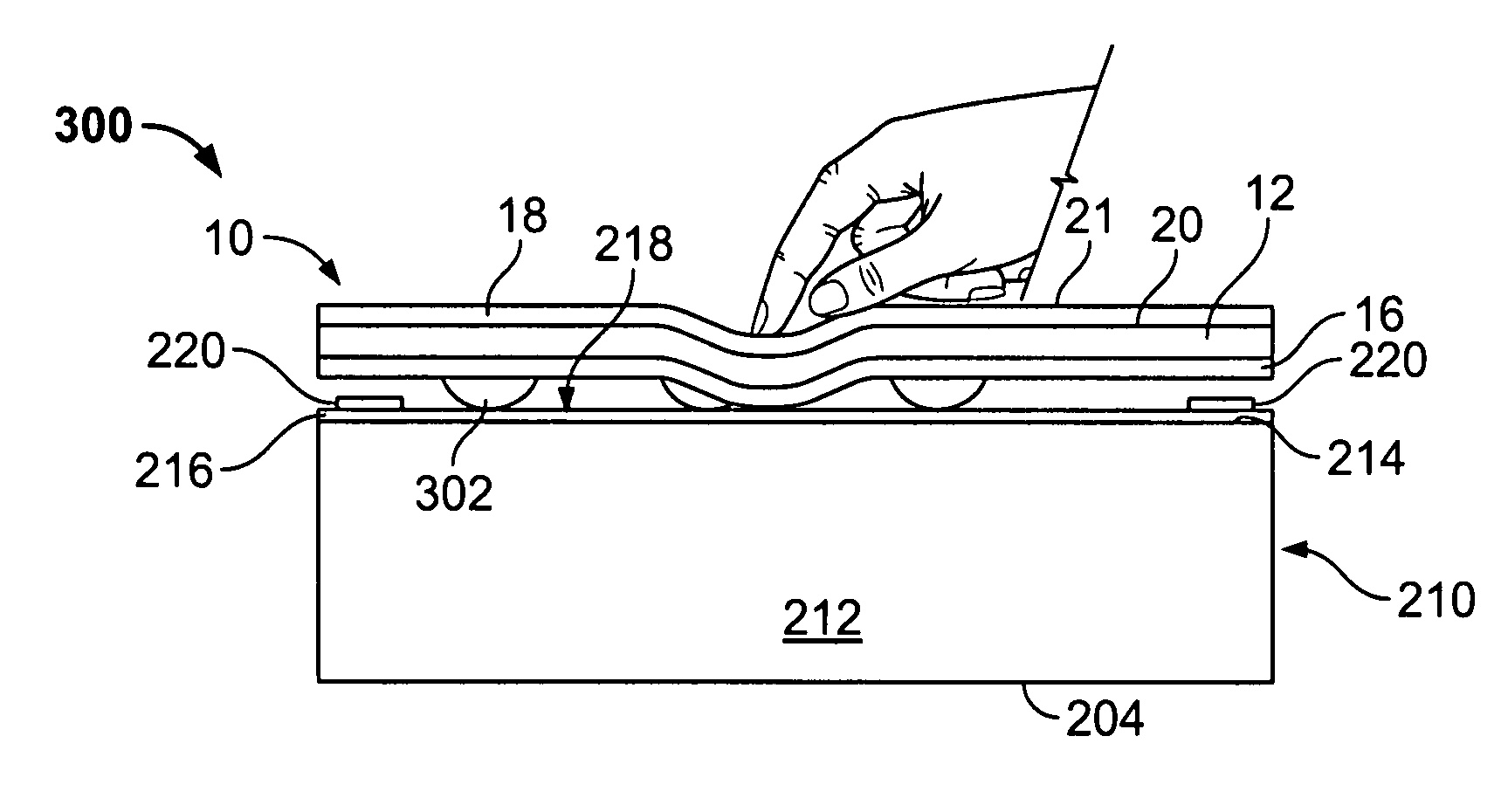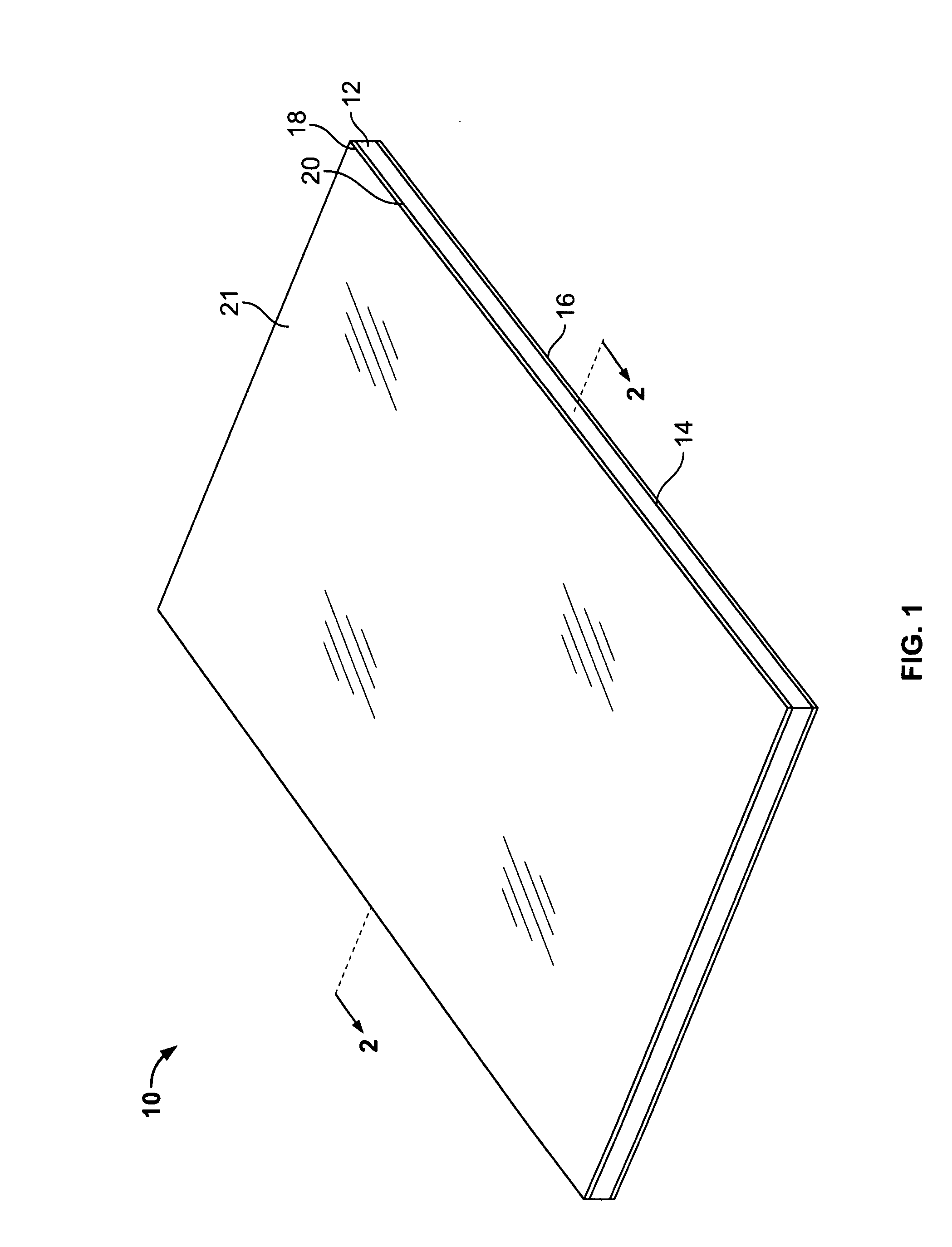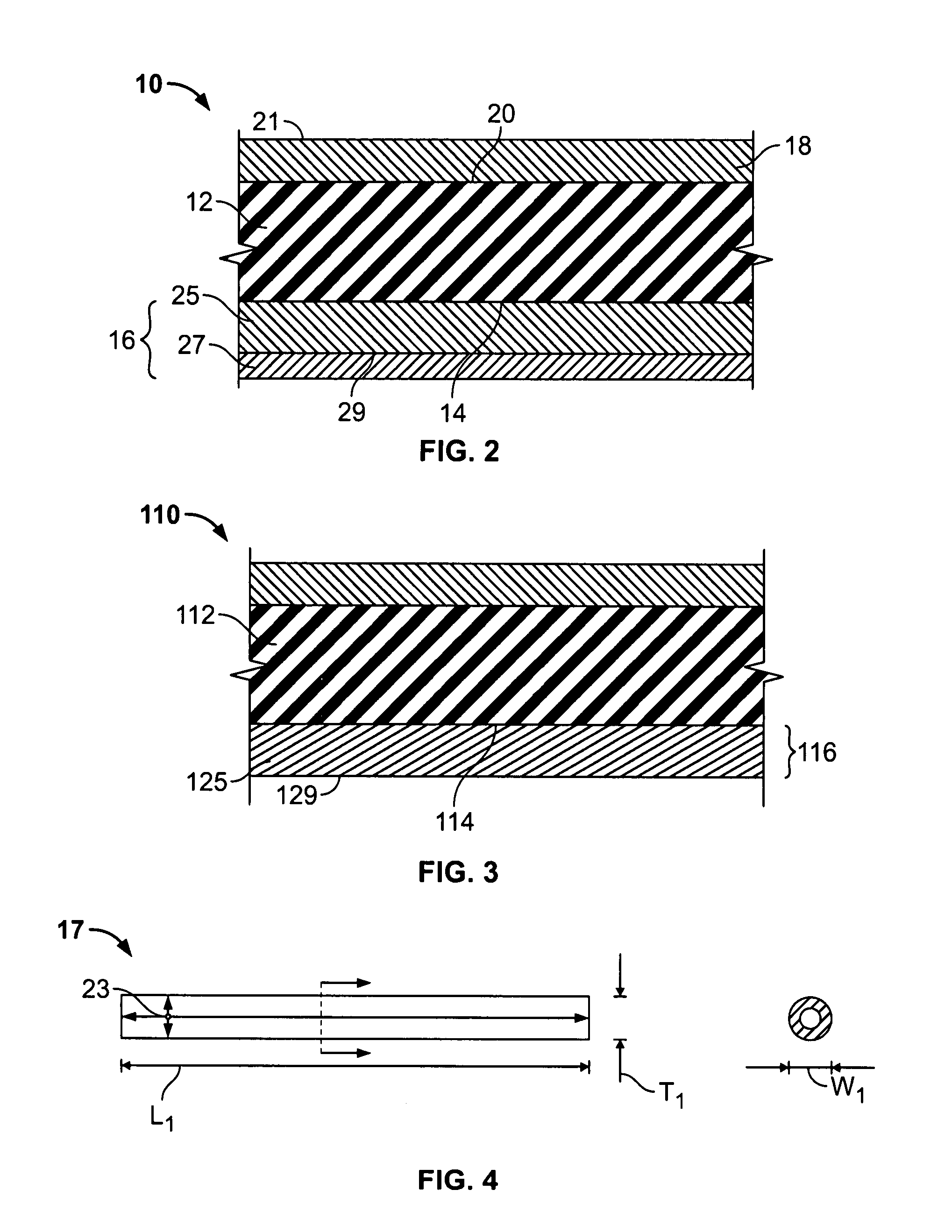Touchscreen using both carbon nanoparticles and metal nanoparticles
a technology of carbon nanoparticles and metal nanoparticles, applied in the direction of conductors, instruments, transportation and packaging, etc., can solve the problems of touchscreen malfunction, failure, and/or function differently than intended, and may be relatively expensive, and achieve the effect of increasing the cost of the touchscreen
- Summary
- Abstract
- Description
- Claims
- Application Information
AI Technical Summary
Benefits of technology
Problems solved by technology
Method used
Image
Examples
example
[0051]As described above, each layer of the electrically conductive materials described and illustrated herein may be fabricated using any suitable method, structure, process, and / or means that enables the layers to function as described herein. One example of fabricating the layers 25 and 27 (FIG. 2) includes, but is not limited to:[0052](1) generating the layer 27 by growing the carbon nanoparticles 17 in the pattern of the carbon nanoparticles 17 illustrated in FIG. 6 onto a quartz substrate by pyrolyzing iron (II) phthalocyanine (FePc) under an argon / hydrogen atmosphere at between approximately 800 and 1100° C. (see Yang, Y.; Huang, S.; He, H.; Mau, A. W. H.; Dai, L. J. Am. Chem. Soc. 1999, 121, 10832; and Dai, L.; Patil, A.; Gong, X.; Guo, Z.; Liu, L.; Liu, Y.; Zhu, D. Chem. Phys. Chem. 2003, 4, 1150, and references cited therein);[0053](2) functionalizing the carbon nanoparticles 17 by grafting a carboxylic group to the walls of the carbon nanoparticles 17 using polyacrylic ac...
PUM
| Property | Measurement | Unit |
|---|---|---|
| sheet resistance | aaaaa | aaaaa |
| contact resistance | aaaaa | aaaaa |
| lengths | aaaaa | aaaaa |
Abstract
Description
Claims
Application Information
 Login to View More
Login to View More - R&D
- Intellectual Property
- Life Sciences
- Materials
- Tech Scout
- Unparalleled Data Quality
- Higher Quality Content
- 60% Fewer Hallucinations
Browse by: Latest US Patents, China's latest patents, Technical Efficacy Thesaurus, Application Domain, Technology Topic, Popular Technical Reports.
© 2025 PatSnap. All rights reserved.Legal|Privacy policy|Modern Slavery Act Transparency Statement|Sitemap|About US| Contact US: help@patsnap.com



